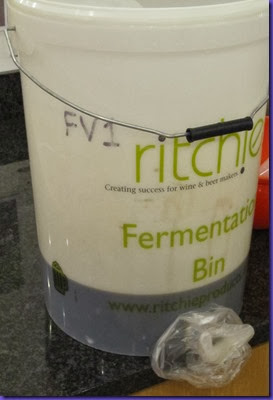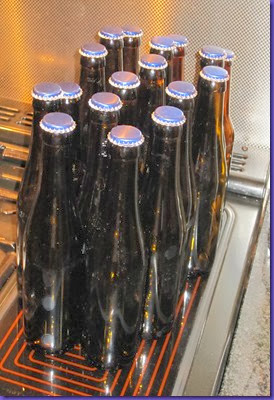Back in May we made a Russian Imperial Stout. Or at least we tried to. But it didn’t really turn out the way we planned due to over-sparging (that is, we put in too much extra water). This resulted in a much weaker brew that we’d planned – 6.5 % instead of 8.5%. (Although it was still delicious!)
So last week we tried again, this time with more careful planning and higher goals still.
A Russian Imperial Stout can be up to 10% ABV or more. If you want to achieve a beer as strong as this you can’t really add ANY water to the mash. The problem is this is rather wasteful of the remaining sugars in the grains – if you don’t add water (sparge) to wash these out then they are wasted.
Enter parti-gyle brewing. This is the name given to the technique of making more than one beer from a single mash. You make your strong beer from the first runnings from the mash tun, then add more water and make a second beer with the second runnings.
This turned out to be easier and less time-consuming than we expected. We did the mash, then ran all the wort out of the mash tun, leaving dry grains. We boiled this as our first beer. Meanwhile, we refilled the mash tun with hot water and after a few minutes ran this off (adding some additional water through normal sparging).
What did that leave us with? Well the first beer reduced down a long way during the boil and we were left with only about 1 gallon of wort. But what a wort – it had a gravity of 1.130! This is hopefully going to give us a beer of about 12% if we can get it to ferment out that far.
The second beer came out at about 1.061. That should give us a respectable 5.5% beer, which we flavoured with addition of a vanilla pod towards the end of the boil. (Mmmm, vanilla stout…)
We had the yeast cake from a recent brew of Audlem Unusual (our Old Peculier clone), so we split that into two which will have provided plenty of yeast for the fermentation. The first beer went absolutely crackers during the first 24 hours, but then calmed down just as fast. So a few days later I added some champagne yeast which has a greater tolerance for high levels of alcohol. Hopefully that will help ferment the beer out further.
This evening I have moved both beers onto our under floor heating to warm them up a bit and encourage them to finish off.
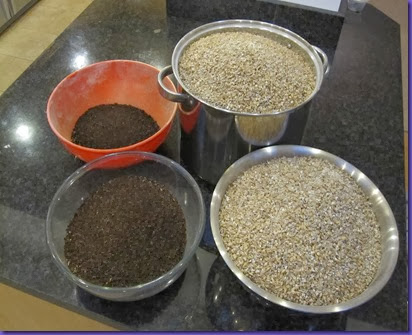
9kg of malt
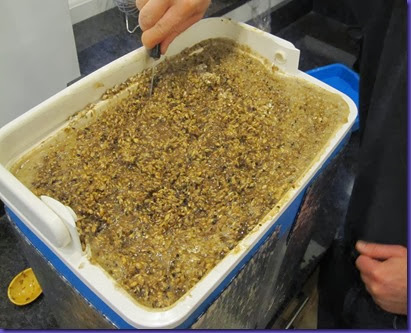
Very full mash tun!
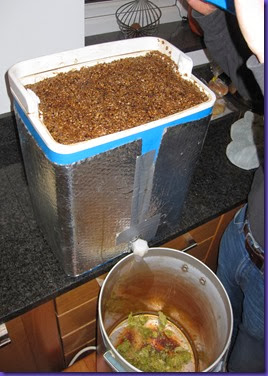
First runnings
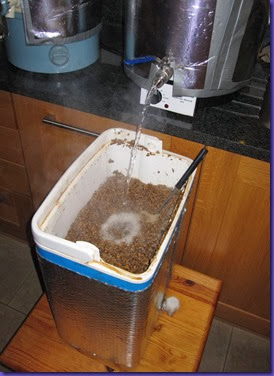
Refilling the mash with hot water

Getting the big beer out of the hops after the boil required a bit of squeezing.
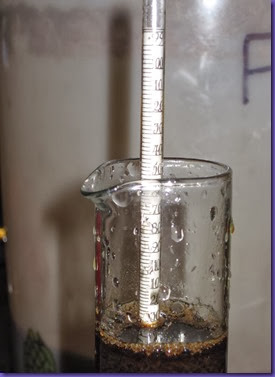
Proof – 1.130
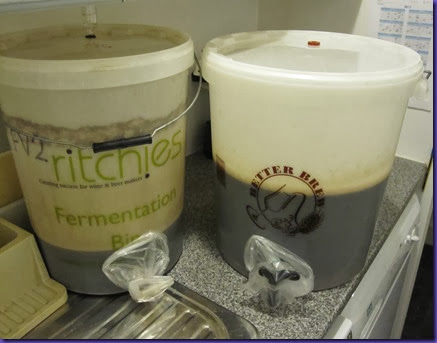
The big beer is on the left – barely 1 gallon
